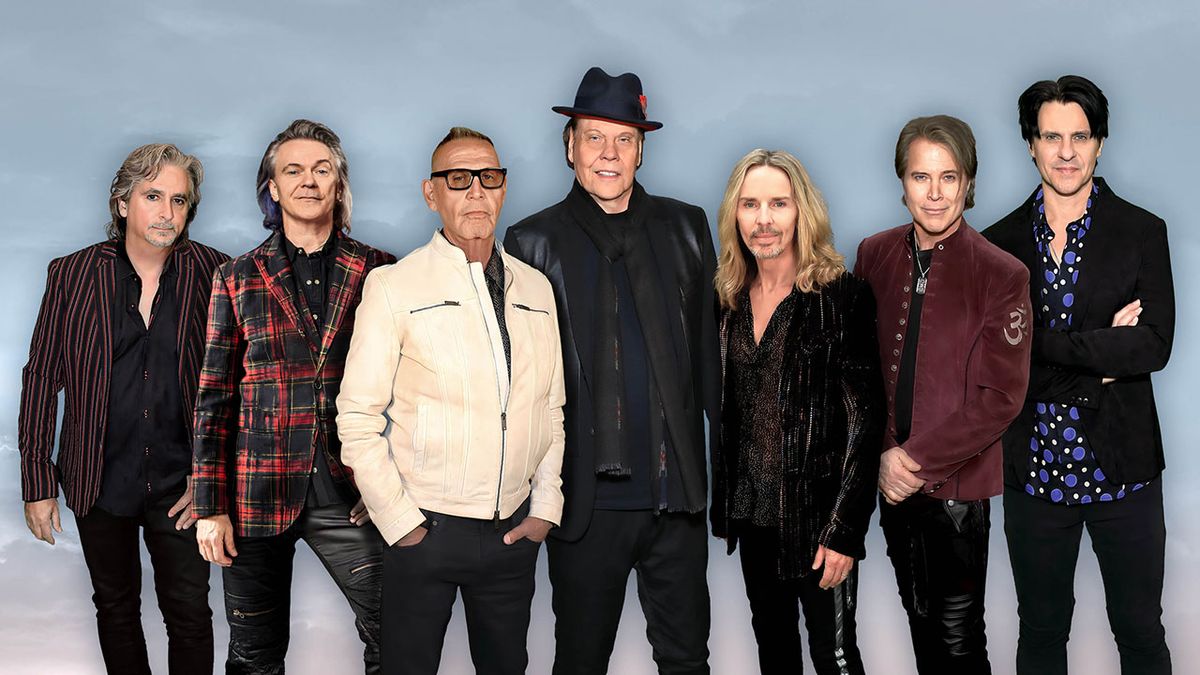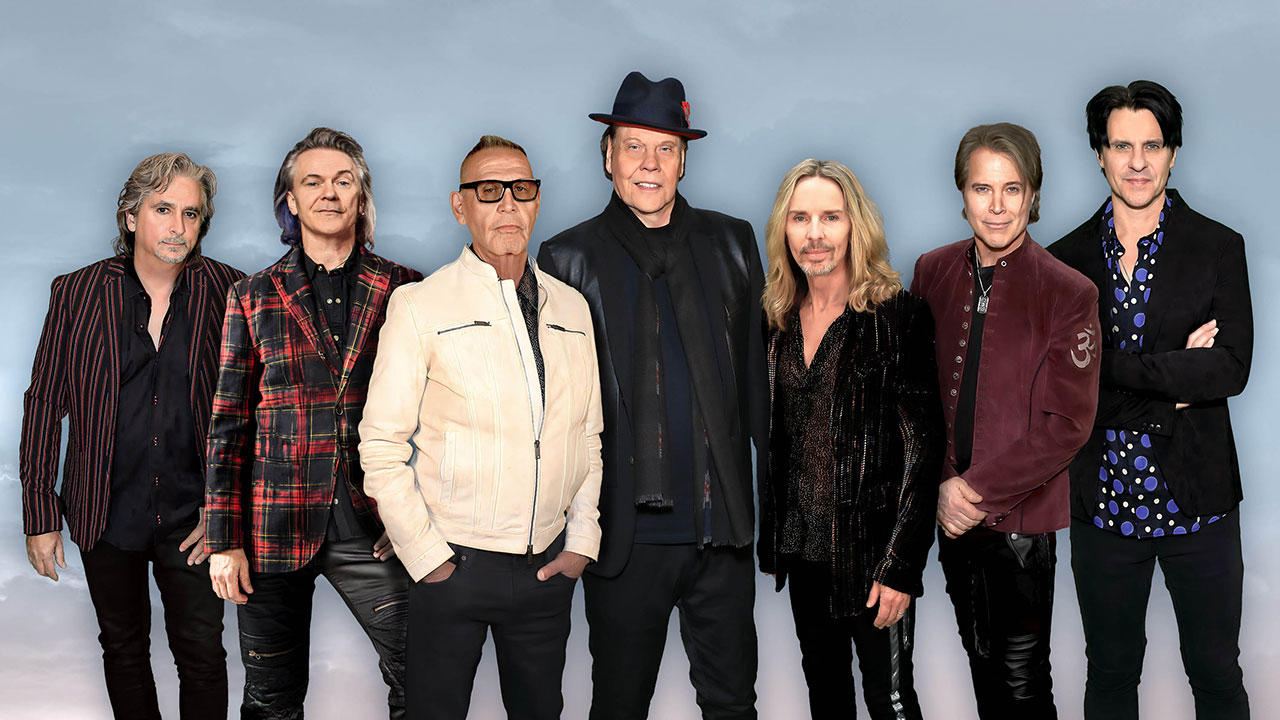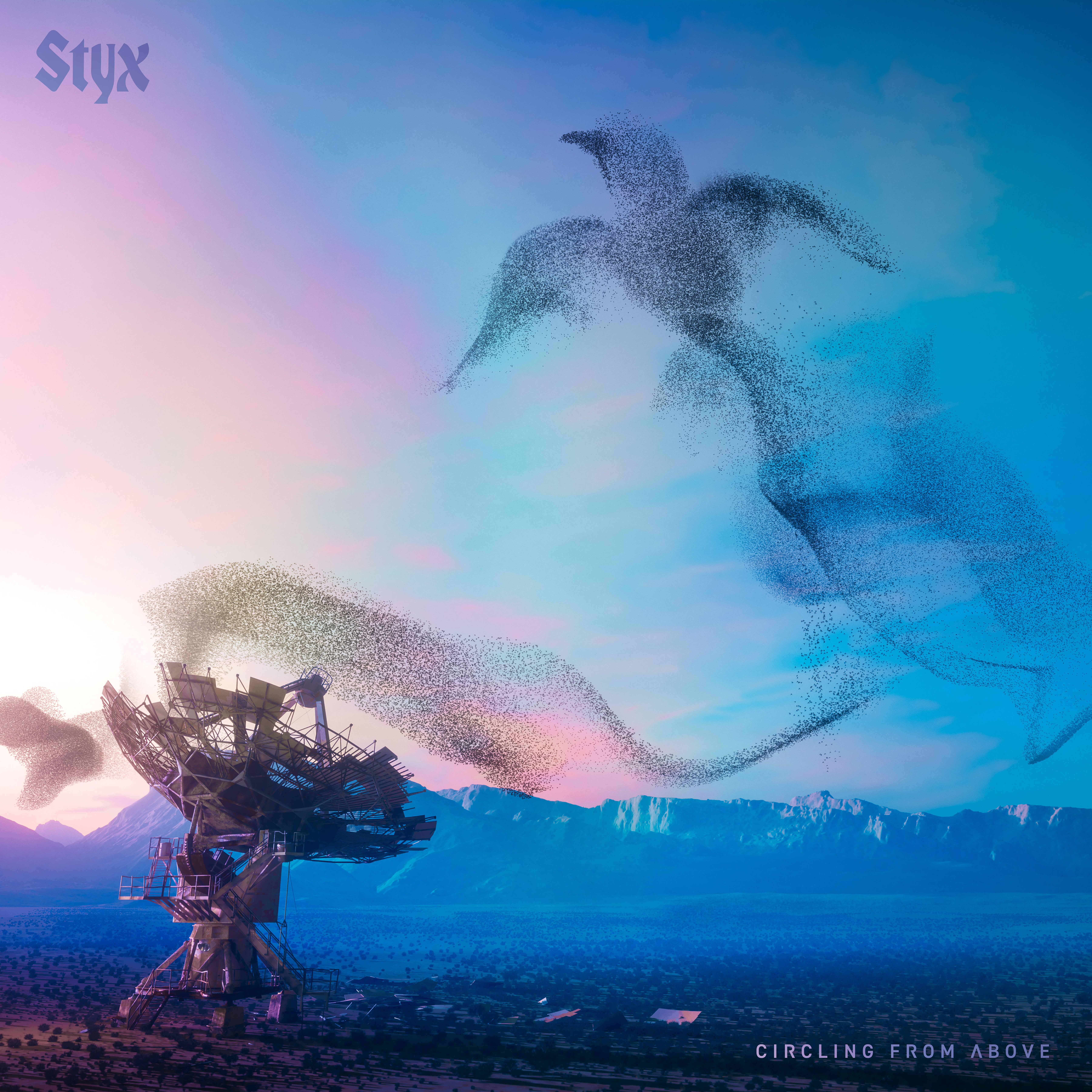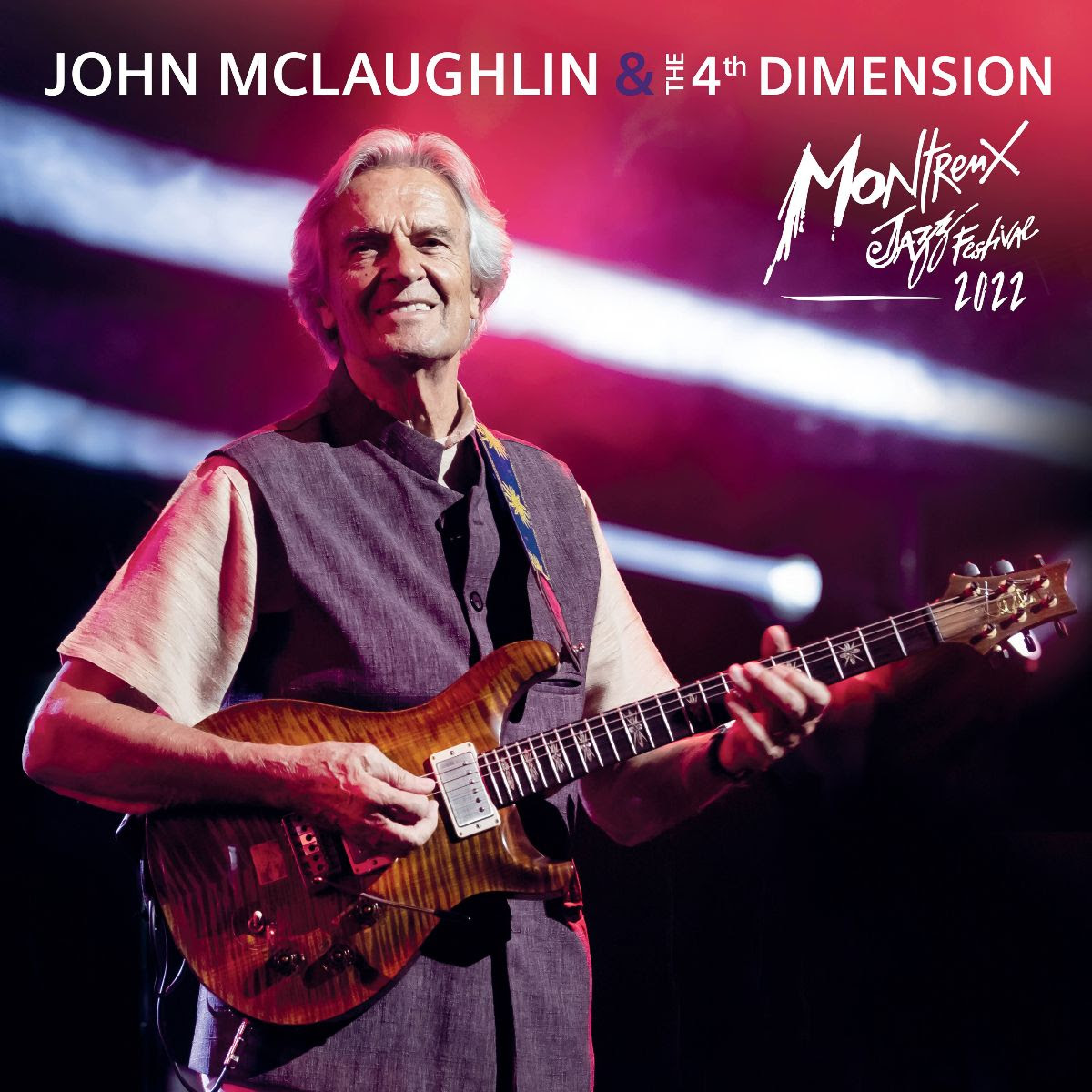
Feature Photo: Justin Higuchi from Los Angeles, CA, USA, CC BY 2.0
Five seasoned Nashville musicians gathered in 2005 for what was intended as casual bluegrass jams, ultimately creating one of contemporary Americana’s most enduring and celebrated ensembles. The SteelDrivers emerged from informal Sunday night sessions orchestrated by songwriter Mike Henderson and featuring the then-unknown Chris Stapleton, evolving into a Grammy-winning force that would redefine bluegrass boundaries. The band has experienced multiple lineup changes throughout its twenty-year history while maintaining its core instrumental foundation.
Their recorded legacy encompasses four studio albums on Rounder Records and one independent live recording captured at Nashville’s legendary Station Inn. The discography includes The SteelDrivers (2008), Reckless (2010), Hammer Down (2013), The Muscle Shoals Recordings (2015), and Bad for You (2020), with their fifth studio album Outrun scheduled for release in 2025. Commercial achievements include Grammy nominations for their early work and a Best Bluegrass Album Grammy win for The Muscle Shoals Recordings, while their debut album reached number 57 on the Billboard Top Country Albums chart.
The current lineup consists of founding members Tammy Rogers on fiddle and vocals, Mike Fleming on bass, and Richard Bailey on banjo, alongside newer members Matt Dame on guitar and vocals, and Brent Truitt on mandolin. Former members include co-founder Chris Stapleton, Gary Nichols, Kelvin Damrell, and the late Mike Henderson, whose death in 2023 marked the end of an era for the band. The SteelDrivers continue performing approximately 75 shows annually across major festivals and concert venues, maintaining their reputation as one of the most compelling live acts in American roots music.
Tammy Rogers
Tammy Rogers joined The SteelDrivers as a founding member in 2005, bringing her distinctive fiddle style and songwriting abilities to the group’s unique sound. Born in Tennessee in 1966 and raised in Irving, Texas, she serves as the band’s primary songwriter and has effectively become their frontwoman since Chris Stapleton’s departure. Her classical violin training and subsequent transition to bluegrass and country music provided the technical foundation for her versatile approach to The SteelDrivers’ genre-blending style.
Her musical journey began with classical violin lessons in fifth grade, followed by performance experiences at bluegrass festivals with her family. After graduating from Belmont University, she quickly established herself in Nashville’s music scene through her audition for Patty Loveless’s touring band in 1990. Subsequent work with artists including Reba McEntire, Emmylou Harris, and numerous session recording projects established her reputation as one of Nashville’s most respected fiddlers.
Rogers’s contributions to The SteelDrivers have been substantial across all their releases. On their self-titled debut, she provided the fiddle framework that helped define their distinctive sound. Reckless showcased her growing confidence as a songwriter and harmony vocalist. Hammer Down featured more prominent contributions from her pen, while The Muscle Shoals Recordings highlighted her role as the band’s creative anchor following personnel changes. Bad for You represents her full emergence as the band’s primary songwriter and creative force, with several deeply personal compositions.
Beyond The SteelDrivers, Rogers has maintained an active solo career and collaborative projects. Her co-founding of Dead Reckoning Records in the 1990s with artists including Mike Henderson established her as a pioneer in Nashville’s alternative country movement. Her recent collaboration with songwriter Thomm Jutz has produced over 140 co-written songs and the album Surely Will Be Singing. Her teaching position at Belmont University allows her to pass her expertise to the next generation of musicians, while her continued session work keeps her connected to Nashville’s broader musical community.
Mike Fleming
Mike Fleming joined The SteelDrivers as a founding member in 2005, providing the bass foundation that anchors their energetic sound. His role extends beyond rhythm section duties to include harmony vocals and creative input that has shaped the band’s musical direction throughout their various lineup changes. Fleming’s consistency has provided stability during The SteelDrivers’ multiple transitions, making him an essential element of their enduring identity.
His musical background includes extensive bluegrass experience dating back to his college years at the University of Missouri, where he first met Mike Henderson in a house full of young musicians exploring various styles. Their bluegrass collaboration lasted approximately seven years before both musicians pursued different directions, with Fleming eventually moving to Nashville to establish himself in the city’s music scene.
Fleming’s bass work across The SteelDrivers’ catalog demonstrates both technical proficiency and musical sensitivity appropriate to their diverse repertoire. His contributions to their debut album established the rhythmic foundation that would become their signature. Reckless featured his adaptation to the band’s evolving sound under evolving leadership structures. Hammer Down, The Muscle Shoals Recordings, and Bad for You all showcase his ability to provide consistent support while adapting to different vocal leaderships and musical approaches.
His relationship with the band extends beyond musical performance to include his role as a steady presence during personnel transitions. His long friendship with Mike Henderson, dating back to their college years, provided emotional continuity during the band’s formation and early development. His professional approach to touring and recording has contributed to The SteelDrivers’ reputation for consistent live performances and quality studio work.
Richard Bailey
Richard Bailey joined The SteelDrivers as a founding member in 2005, bringing his banjo expertise to their innovative approach to bluegrass music. His traditional bluegrass background provides counterpoint to the band’s more contemporary influences, creating the tension that defines their distinctive sound. Bailey’s playing combines technical mastery with musical creativity that pushes banjo boundaries within bluegrass contexts.
His musical foundation encompasses decades of experience in Nashville’s bluegrass community, where he developed relationships with the musicians who would eventually become The SteelDrivers. His reputation as a skilled banjo player made him an obvious choice when Mike Henderson began assembling the group for their initial casual sessions at his home in 2005.
Bailey’s banjo contributions across The SteelDrivers’ albums showcase both traditional elements and innovative approaches to the instrument. His work on their debut demonstrated his ability to provide classic bluegrass drive while adapting to Chris Stapleton’s soulful vocal style. Reckless featured his growing comfort with the band’s expanding musical palette. Subsequent albums including Hammer Down, The Muscle Shoals Recordings, and Bad for You highlight his continued evolution as both traditionalist and innovator.
His touring experience with The SteelDrivers includes major festivals and concert halls where his stage presence contributes to their dynamic live performances. His banjo work provides rhythmic drive during uptempo numbers while offering melodic counterpoint during ballads. His collaboration with the other founding members has created a musical chemistry that survives personnel changes and maintains The SteelDrivers’ essential character.
Matt Dame
Matt Dame joined The SteelDrivers as their current lead vocalist and guitarist, bringing a fresh voice to the band’s continuing evolution. His addition represents The SteelDrivers’ ongoing commitment to maintaining their musical vitality while honoring their established sound. Dame’s vocal style and guitar work provide continuity with the band’s tradition while introducing new elements that keep their music current.
His musical background includes experience in various Nashville musical contexts that prepared him for The SteelDrivers’ demanding performance requirements. His understanding of both traditional bluegrass and contemporary Americana allows him to navigate the band’s diverse repertoire with confidence and authenticity.
Dame’s integration into The SteelDrivers has allowed the band to continue their touring and recording activities following previous lineup changes. His vocal contributions complement the band’s established sound while adding personal elements that distinguish his tenure. His guitar work provides both rhythmic support and melodic enhancement that fulfills the requirements established by previous band members.
His stage presence contributes to The SteelDrivers’ continued reputation as compelling live performers. His interaction with veteran band members demonstrates the professional chemistry that allows The SteelDrivers to maintain their musical excellence across different personnel configurations. His commitment to the band’s artistic vision ensures their continued relevance in the competitive Americana music landscape.
Brent Truitt
Brent Truitt joined The SteelDrivers as mandolinist in December 2011, replacing founding member Mike Henderson and bringing his own production experience to the band. A Nashville musician and record producer, Truitt’s addition coincided with The SteelDrivers’ transition to a new phase of their career following Chris Stapleton’s departure. His mandolin work and production insights have contributed significantly to their continued success.
His musical background includes extensive experience as both performer and producer in Nashville’s music community. His production work with various artists provided him with studio expertise that benefits The SteelDrivers’ recording processes. His understanding of both traditional and contemporary approaches to string band music makes him well-suited to their genre-blending approach.
Truitt’s mandolin contributions began with Hammer Down, where he helped define the band’s post-Henderson sound. The Muscle Shoals Recordings showcased his ability to provide both traditional bluegrass elements and more contemporary textures. Bad for You demonstrates his full integration into the band’s creative process, with his mandolin work essential to their current sound.
His production involvement extends beyond performance to include creative input on arrangements and sonic approaches. His technical knowledge helps The SteelDrivers achieve the sound quality that maintains their professional reputation. His collaborative relationship with veteran band members ensures continuity with their established artistic vision while allowing for creative growth.
Chris Stapleton (Former Member)
Chris Stapleton joined The SteelDrivers as founding member and lead vocalist in 2005, serving as the band’s original frontman until his departure in April 2010. His powerful vocal style and songwriting collaboration with Mike Henderson established The SteelDrivers’ signature sound that would influence American music far beyond bluegrass boundaries. His tenure produced the band’s most commercially successful and critically acclaimed early material.
Stapleton’s background included extensive songwriting experience in Nashville, where he had established himself as a versatile composer capable of working across multiple genres. His collaboration with Mike Henderson on songs that would become SteelDrivers’ standards began years before the band’s formation. His vocal approach combined traditional country elements with soul and blues influences that distinguished The SteelDrivers from conventional bluegrass groups.
His contributions to The SteelDrivers included lead vocals on their self-titled debut and Reckless, both of which achieved significant commercial and critical success. Songs like “Blue Side of the Mountain,” “If It Hadn’t Been for Love,” and “Sticks That Made Thunder” established templates that would influence the band’s approach long after his departure. His guitar work provided rhythmic support while his songwriting collaboration with Henderson created material that remains central to their repertoire.
Stapleton’s departure from The SteelDrivers in 2010 to focus on family and songwriting marked a significant transition for the band. His subsequent solo career launched with Traveller in 2015, bringing him international recognition and multiple Grammy Awards. His continued friendship with former band members and his performance of SteelDrivers’ material in his solo career maintains connections to his bluegrass roots while demonstrating the lasting impact of his time with the band.
Gary Nichols (Former Member)
Gary Nichols joined The SteelDrivers as lead vocalist and guitarist in 2010, replacing Chris Stapleton and bringing his own distinctive voice to the band’s evolving sound. A former Mercury Records artist, Nichols provided stability during a crucial transition period while helping The SteelDrivers maintain their commercial momentum. His seven-year tenure produced some of the band’s most cohesive and impactful recorded material.
His musical background included solo recording experience and extensive performing credentials that prepared him for The SteelDrivers’ demanding tour schedule. His vocal style differed from Stapleton’s approach while maintaining the emotional intensity that defined the band’s sound. His guitar work complemented the band’s instrumental arrangements while providing the foundational rhythmic support required by their high-energy performances.
Nichols’s contributions spanned three studio albums with The SteelDrivers: Hammer Down, The Muscle Shoals Recordings, and initial work on what would become Bad for You. His vocal performances on The Muscle Shoals Recordings contributed to their Grammy Award win for Best Bluegrass Album in 2015. His songwriting collaboration with band members added new material to their repertoire while maintaining continuity with their established style.
His departure in August 2017 marked another transition period for The SteelDrivers, though his professional approach to the change ensured continued respect from band members and fans. His work with the band demonstrated their ability to maintain musical excellence across different vocal leaderships. His contributions to their Grammy-winning material established his permanent place in The SteelDrivers’ history.
Kelvin Damrell (Former Member)
Kelvin Damrell joined The SteelDrivers as lead vocalist in 2017, replacing Gary Nichols after being discovered through a YouTube video spotted by Tammy Rogers’s daughter. The Kentucky native brought fresh energy and vocal interpretation to the band’s established repertoire while contributing to their 2020 album Bad for You. His tenure marked another successful transition in The SteelDrivers’ ability to reinvent their sound with new personnel.
His musical background included performing experience that qualified him for The SteelDrivers’ professional requirements. His vocal style incorporated elements that distinguished his approach from previous lead singers while maintaining the emotional intensity that defines the band’s character. His guitar work provided competent support to the band’s arrangements while allowing focus on his vocal contributions.
Damrell’s primary recorded contribution appears on Bad for You, where his voice defines the album’s sound and approach. His interpretation of both new material and reimagined older songs demonstrated his ability to honor The SteelDrivers’ tradition while adding personal elements. His collaborative relationship with band members suggested potential for long-term creative development.
His period with The SteelDrivers included extensive touring that allowed audiences to experience his interpretation of their catalog. His stage presence contributed to their continued reputation as compelling live performers. His departure marked another transition in the band’s ongoing evolution, illustrating their pattern of successful personnel changes that maintain musical quality while introducing fresh elements.
Mike Henderson (Former Member, Deceased)
Mike Henderson co-founded The SteelDrivers in 2005, serving as mandolinist, songwriter, and the band’s original musical architect until his departure in 2011. Born in Independence, Missouri, in 1953, Henderson’s diverse musical background encompassed blues, country, and bluegrass that directly informed The SteelDrivers’ genre-defying approach. His death in September 2023 marked the loss of one of Nashville’s most respected musicians and the original creative force behind The SteelDrivers.
Henderson’s musical journey began in Missouri where he met future bandmate Mike Fleming during college years at the University of Missouri. Their early bluegrass collaboration laid groundwork for relationships that would eventually lead to The SteelDrivers’ formation. His move to Nashville in the 1980s led to staff songwriter positions with EMI and solo recording contracts that established his reputation as performer and composer.
His contributions to The SteelDrivers included mandolin performance and songwriting on their self-titled debut and Reckless albums. His collaboration with Chris Stapleton produced many of the band’s most enduring songs, including material that would later become central to Stapleton’s solo career. His mandolin work provided melodic counterpoint to the band’s rhythmic foundation while his production insights shaped their studio approach.
Henderson’s continued collaboration with Chris Stapleton after leaving The SteelDrivers produced Grammy-winning songs including “Broken Halos” and “Starting Over.” His Monday night residency at Nashville’s Bluebird Cafe for nearly forty years demonstrated his commitment to live musical community. His influence on The SteelDrivers’ sound and approach continues through the band’s ongoing commitment to his musical vision and their dedication to songs from their Henderson era.
Read More: Artists’ Interviews Directory At ClassicRockHistory.com
Read More: Classic Rock Bands List And Directory
Complete List Of The SteelDrivers Band Members article published on ClassicRockHistory.com© 2025






















